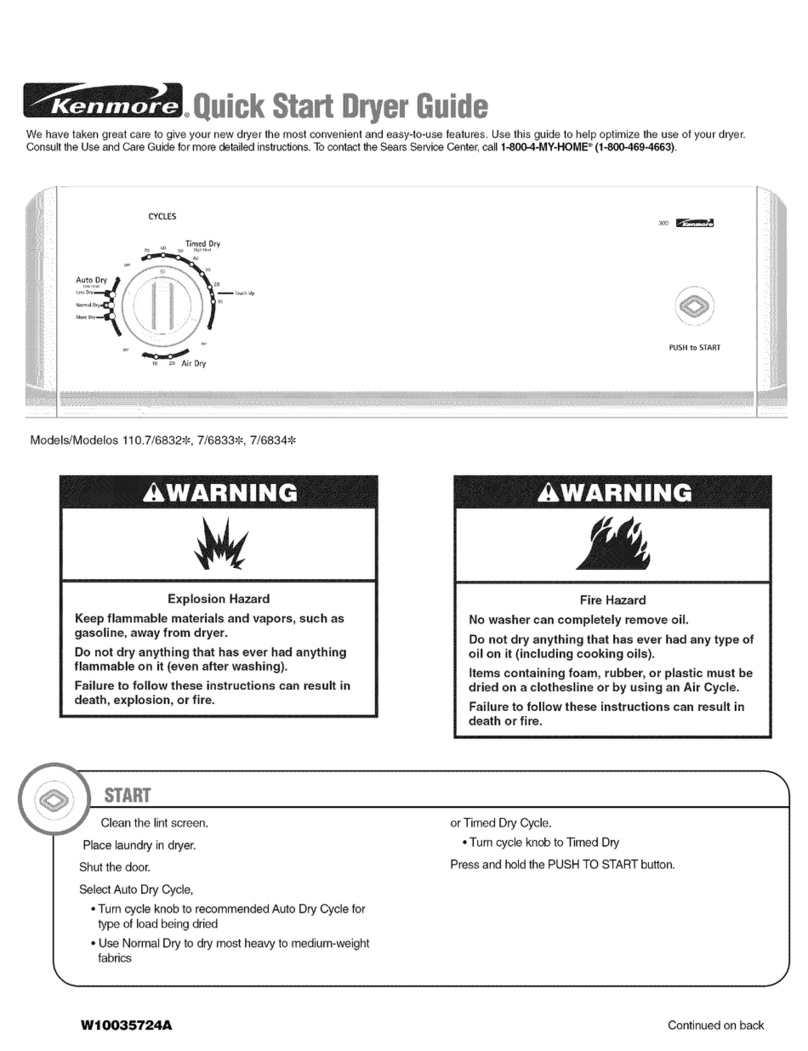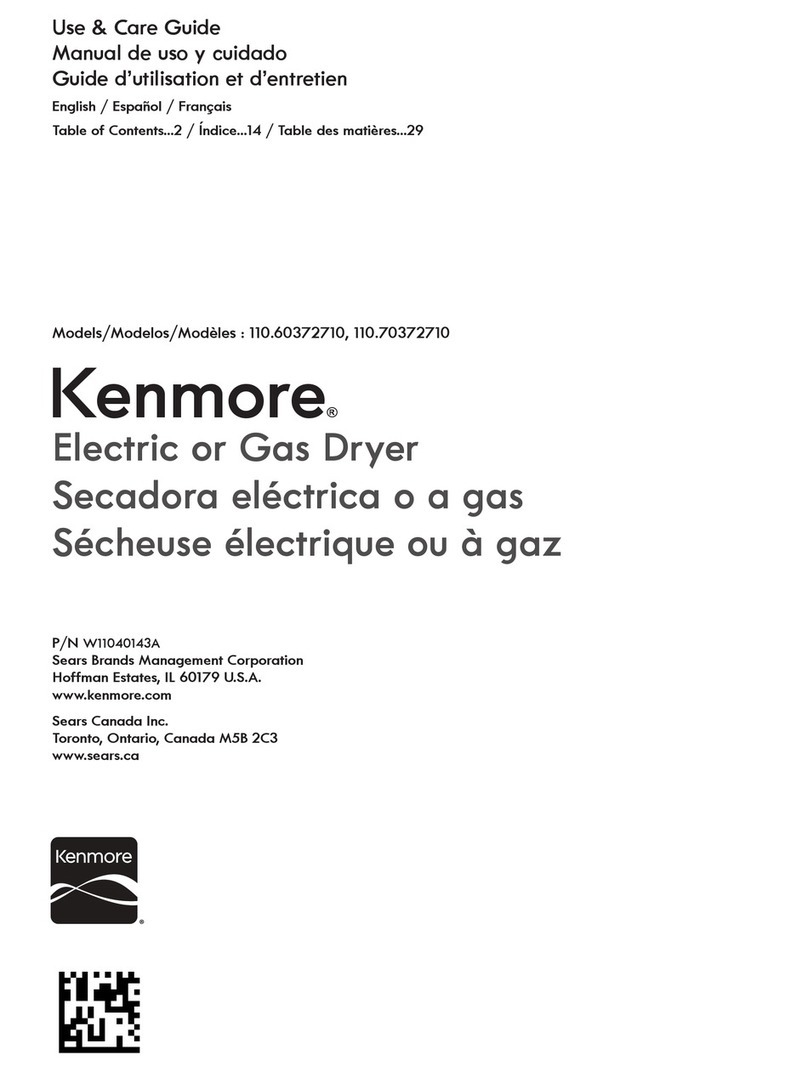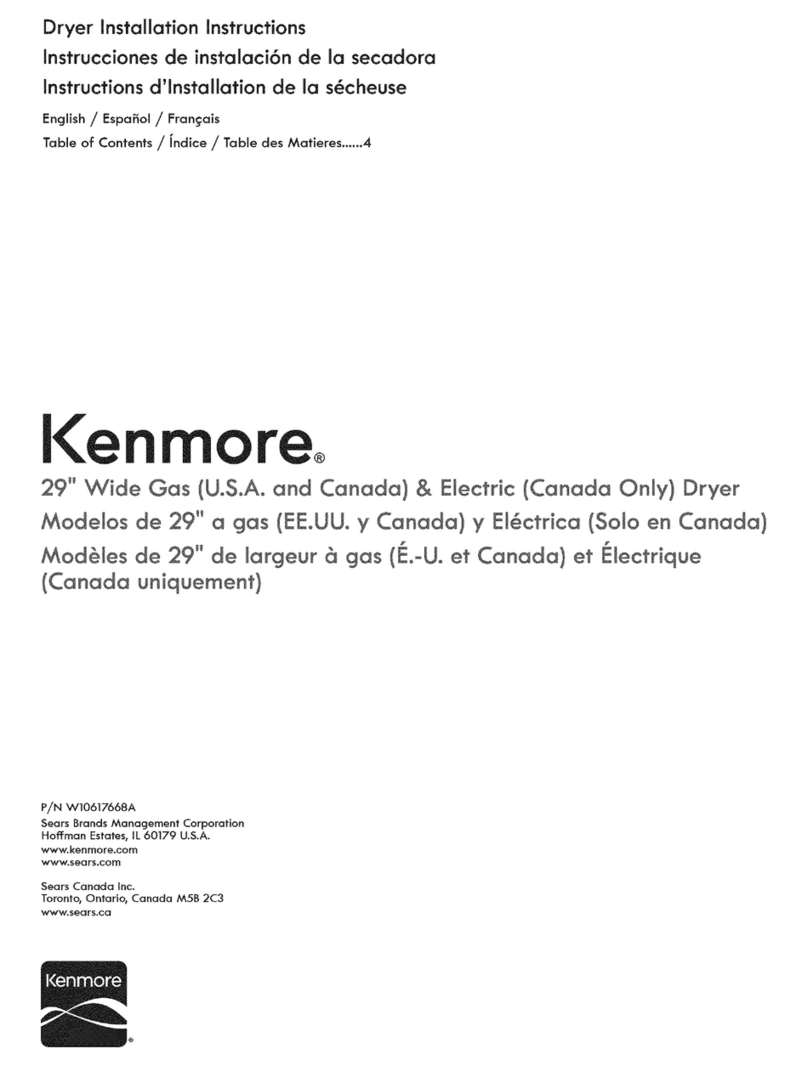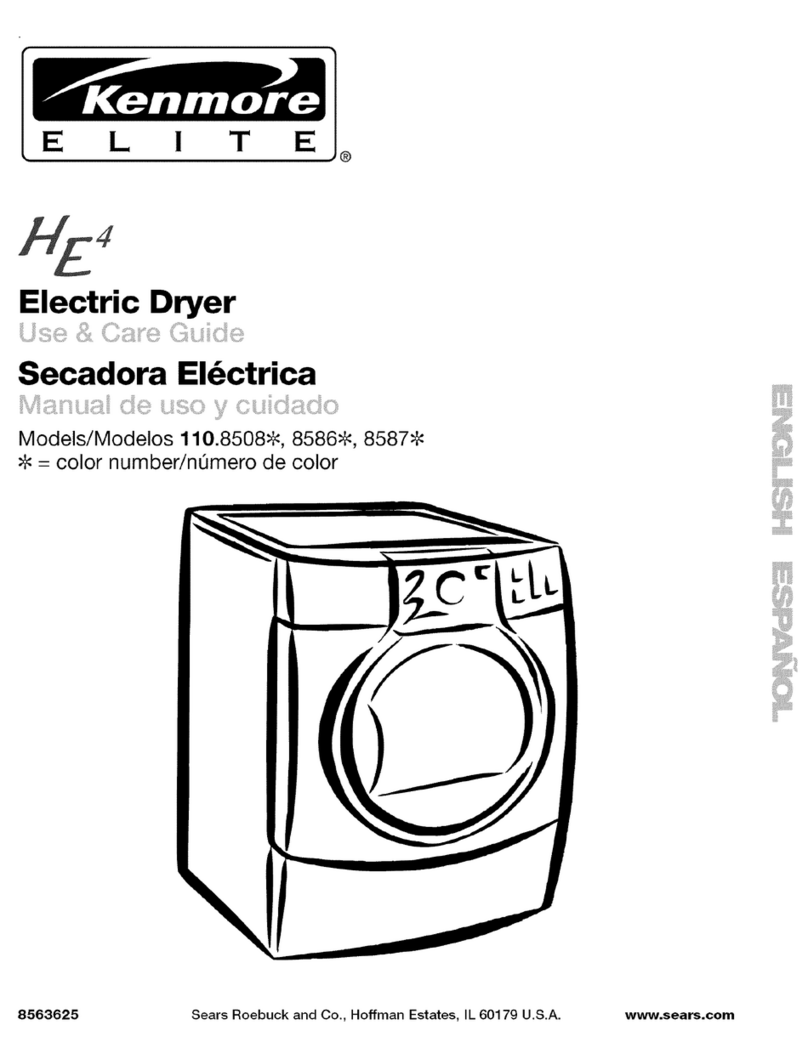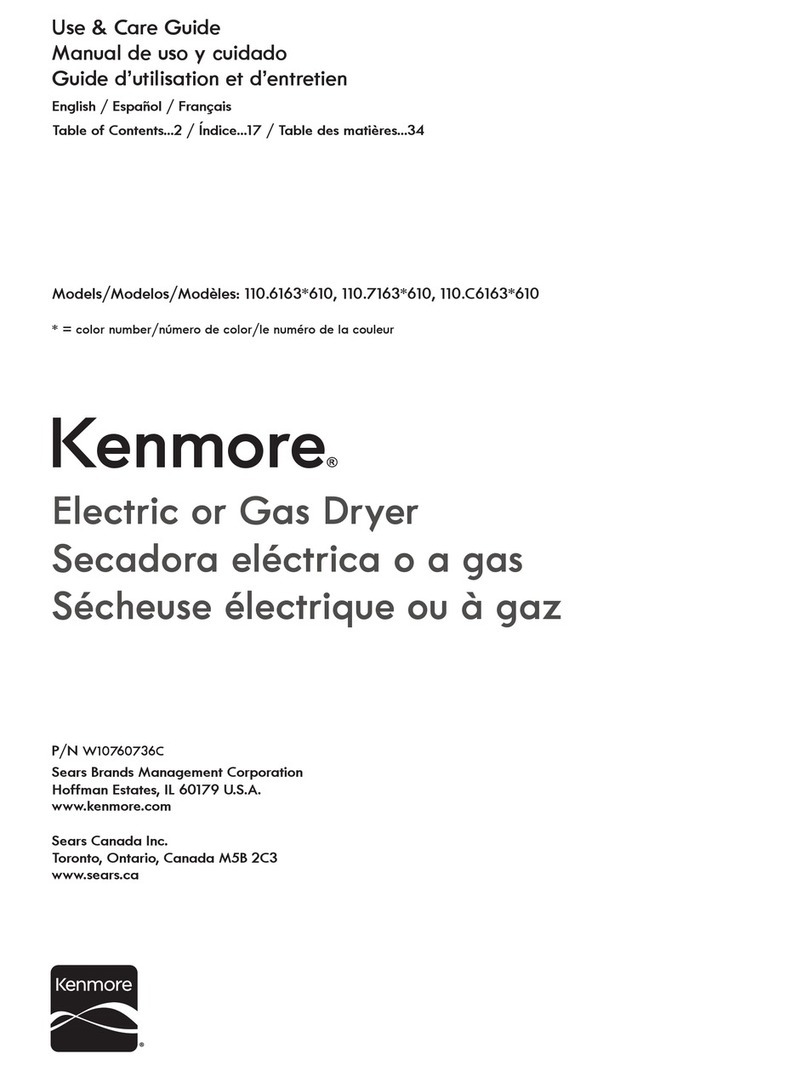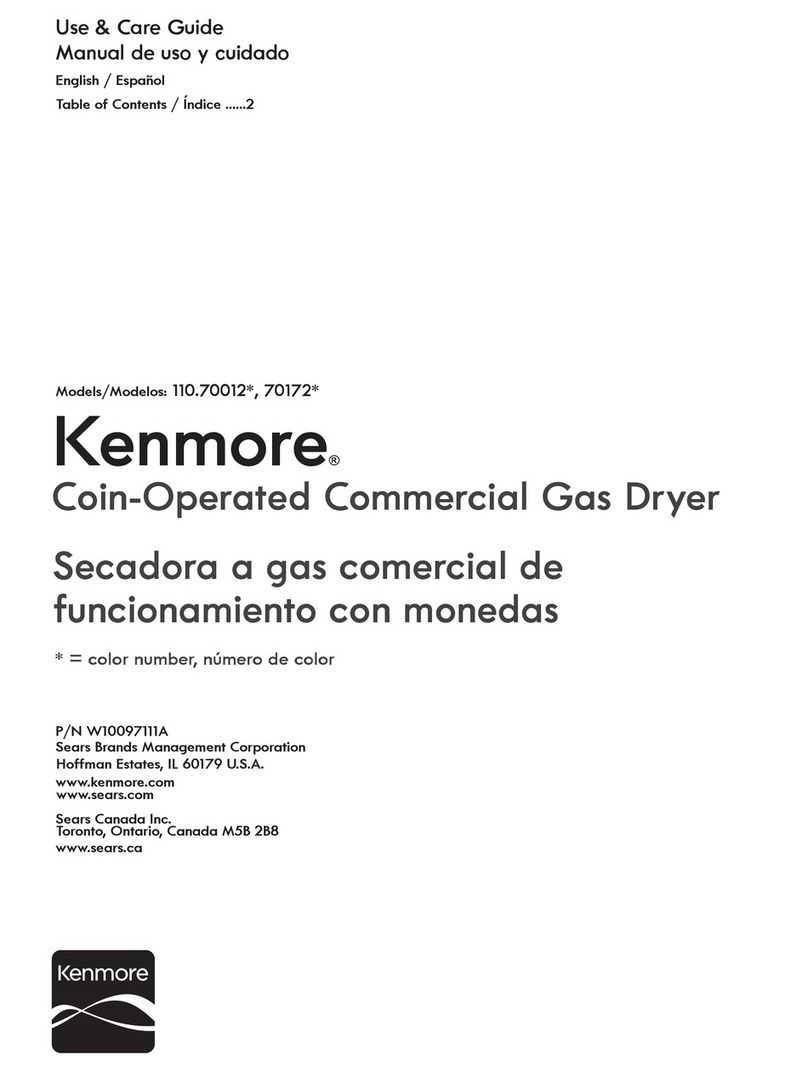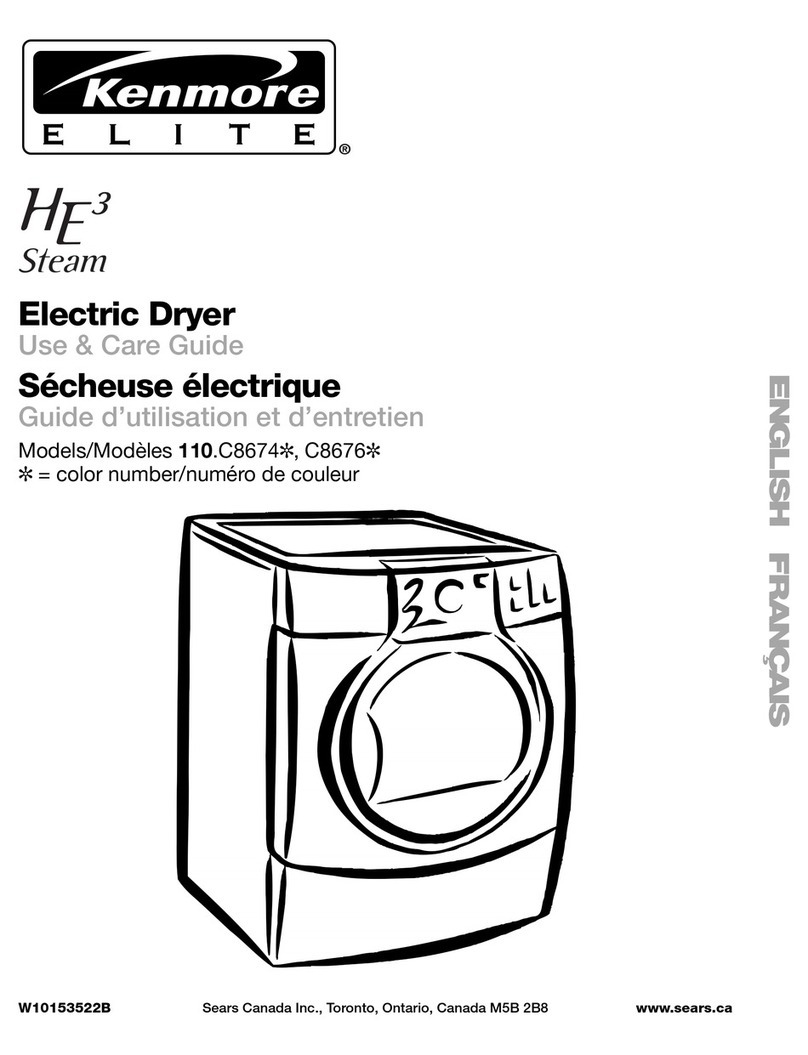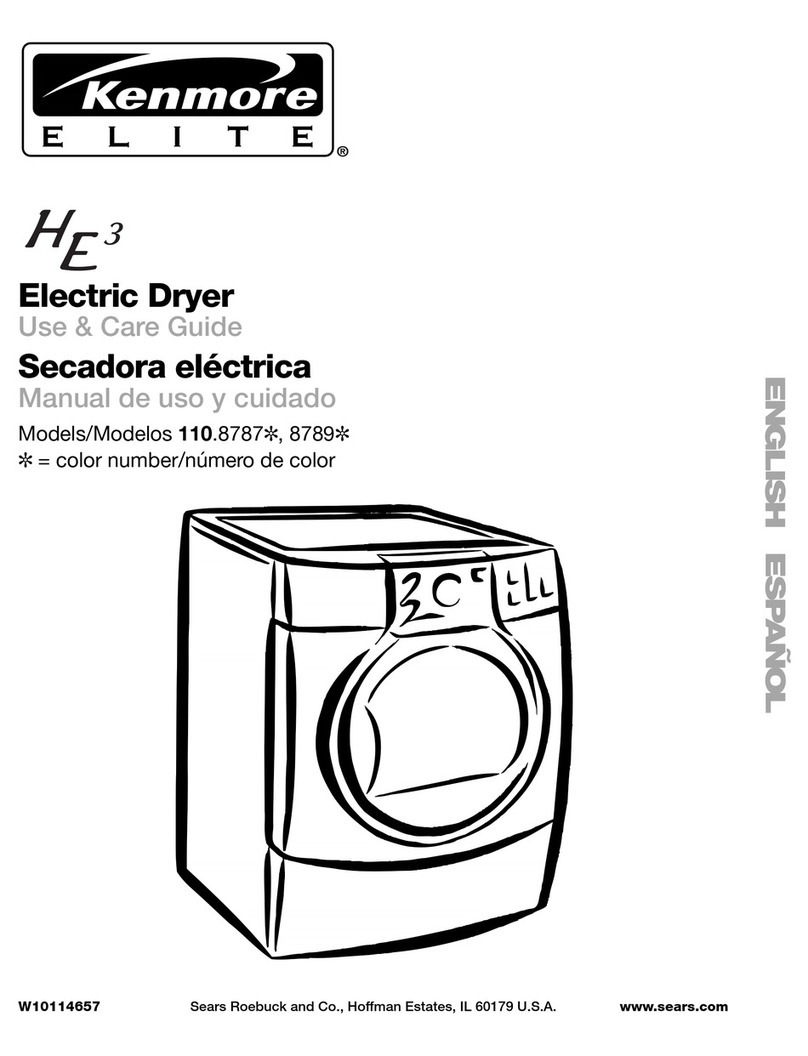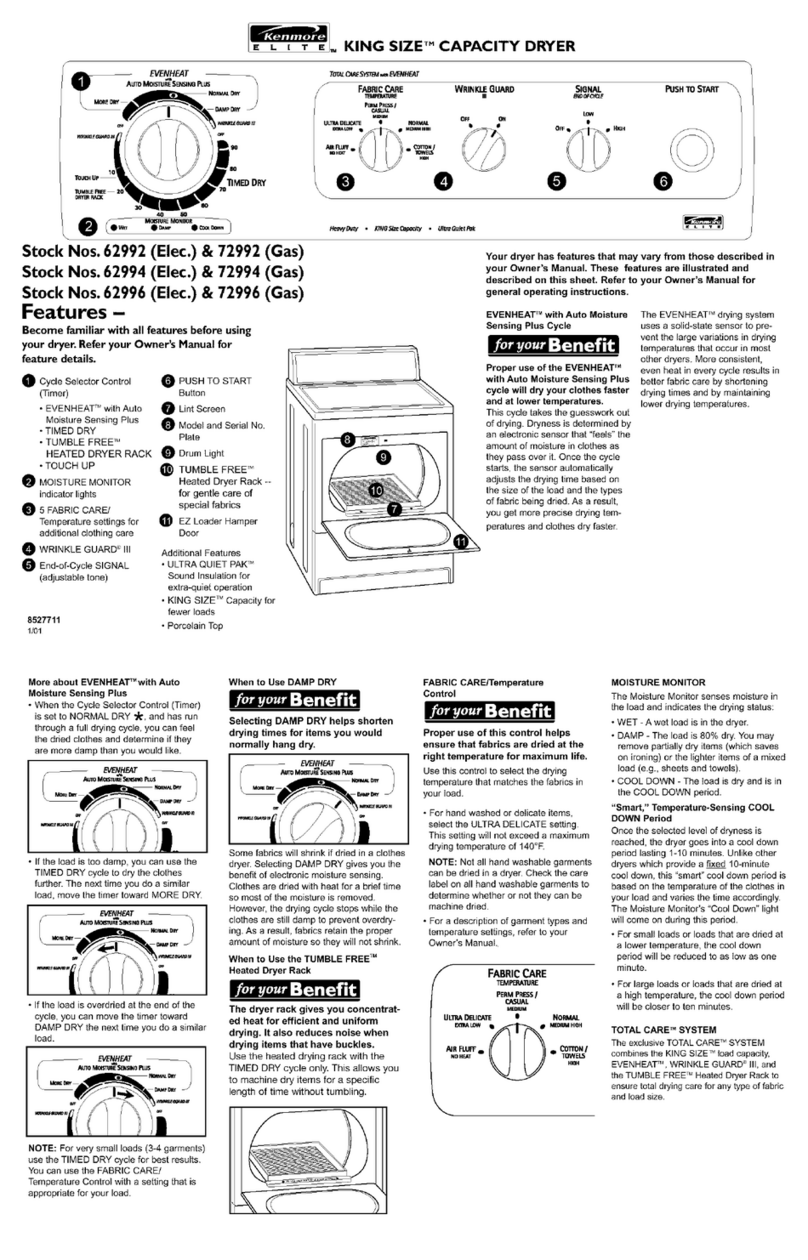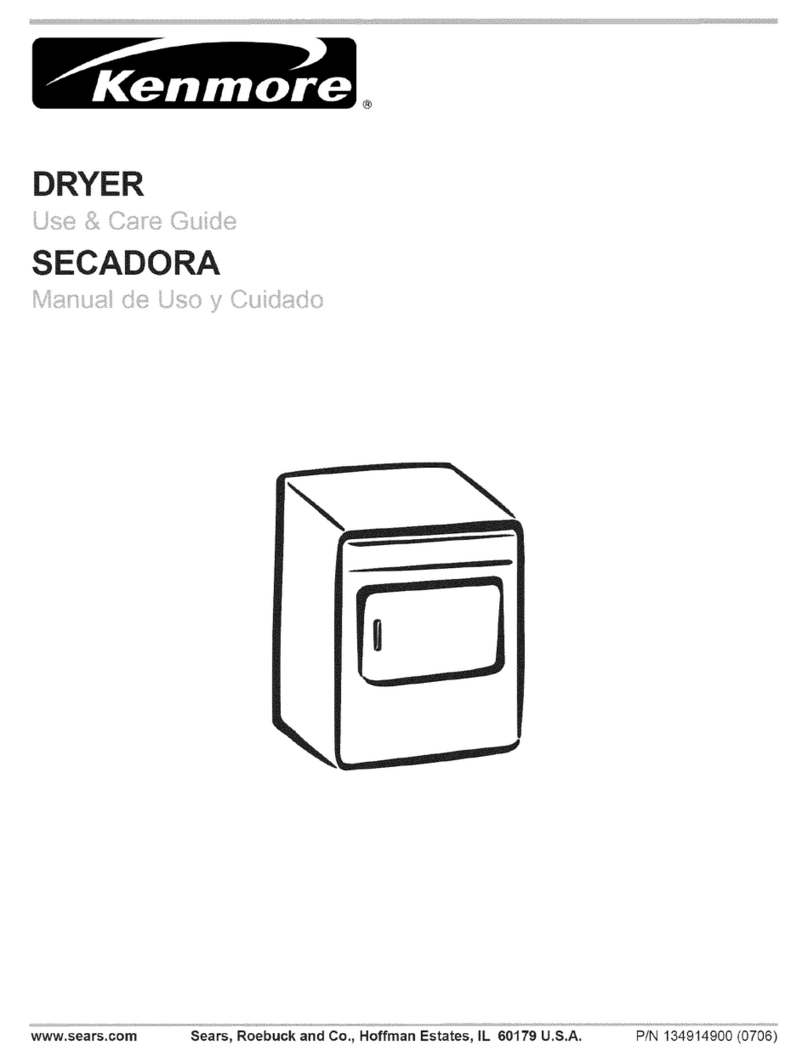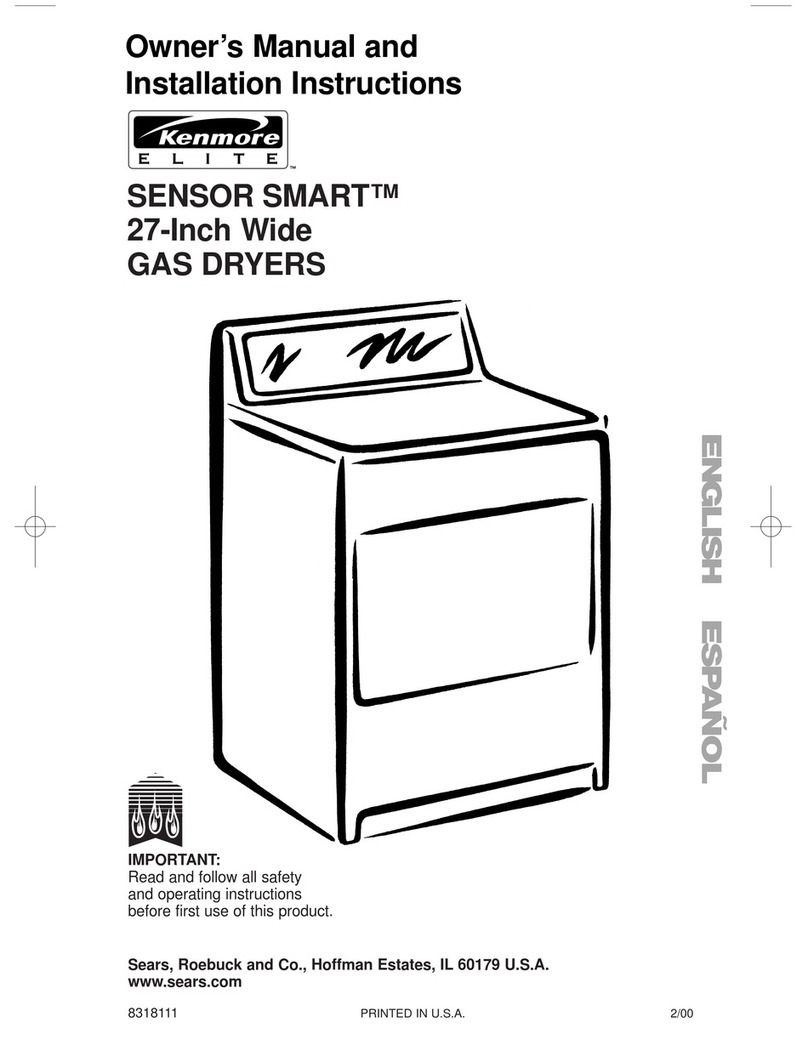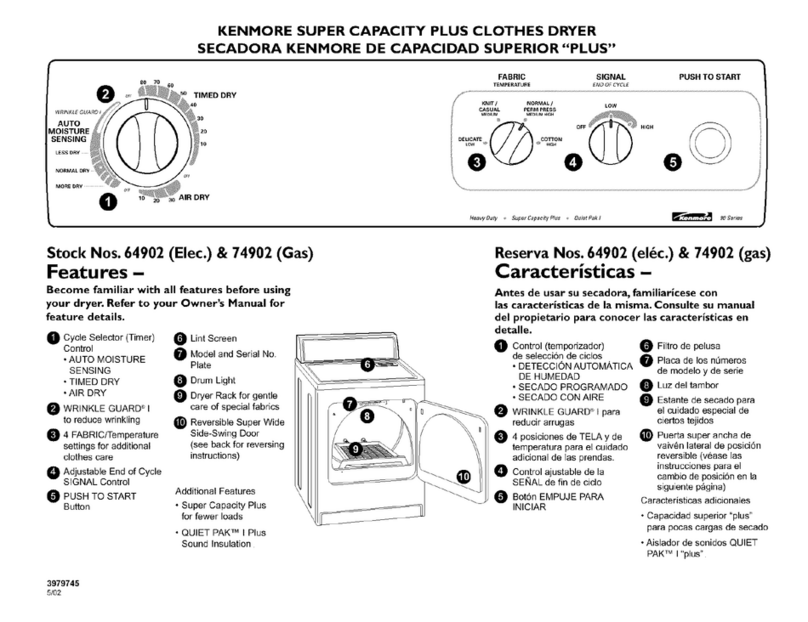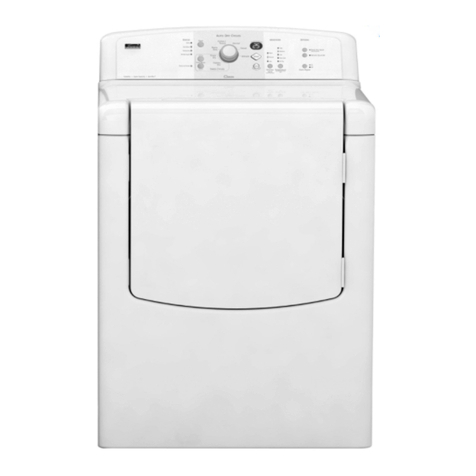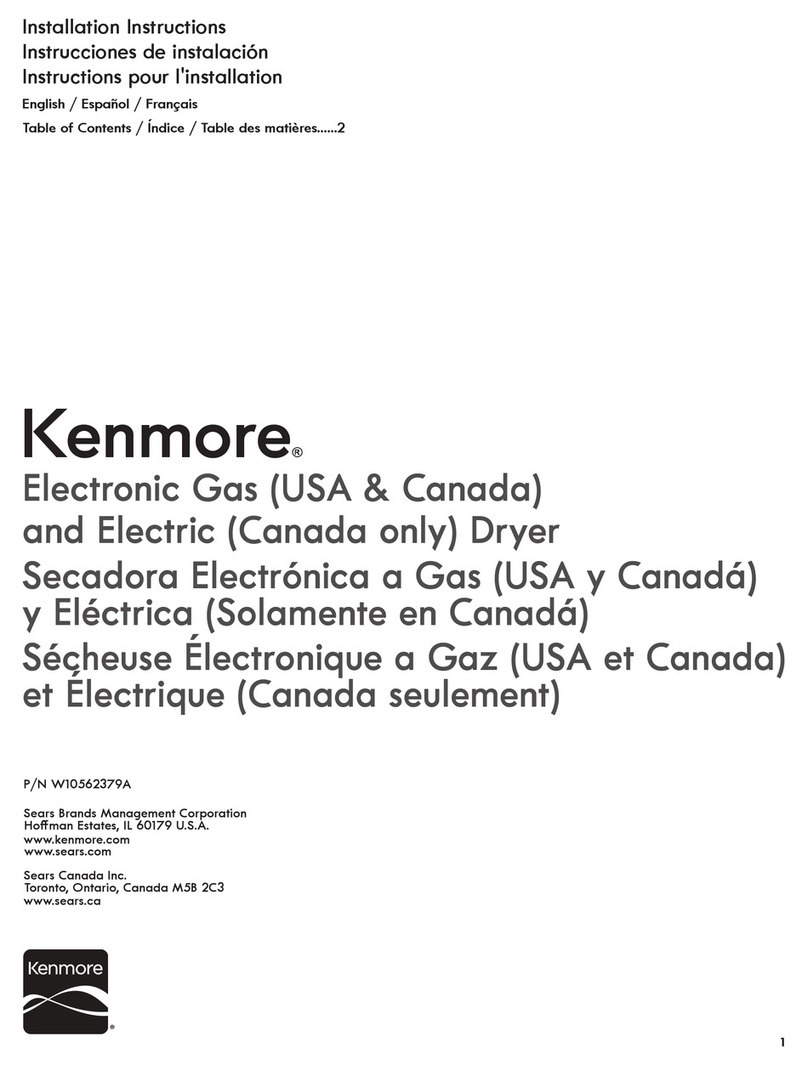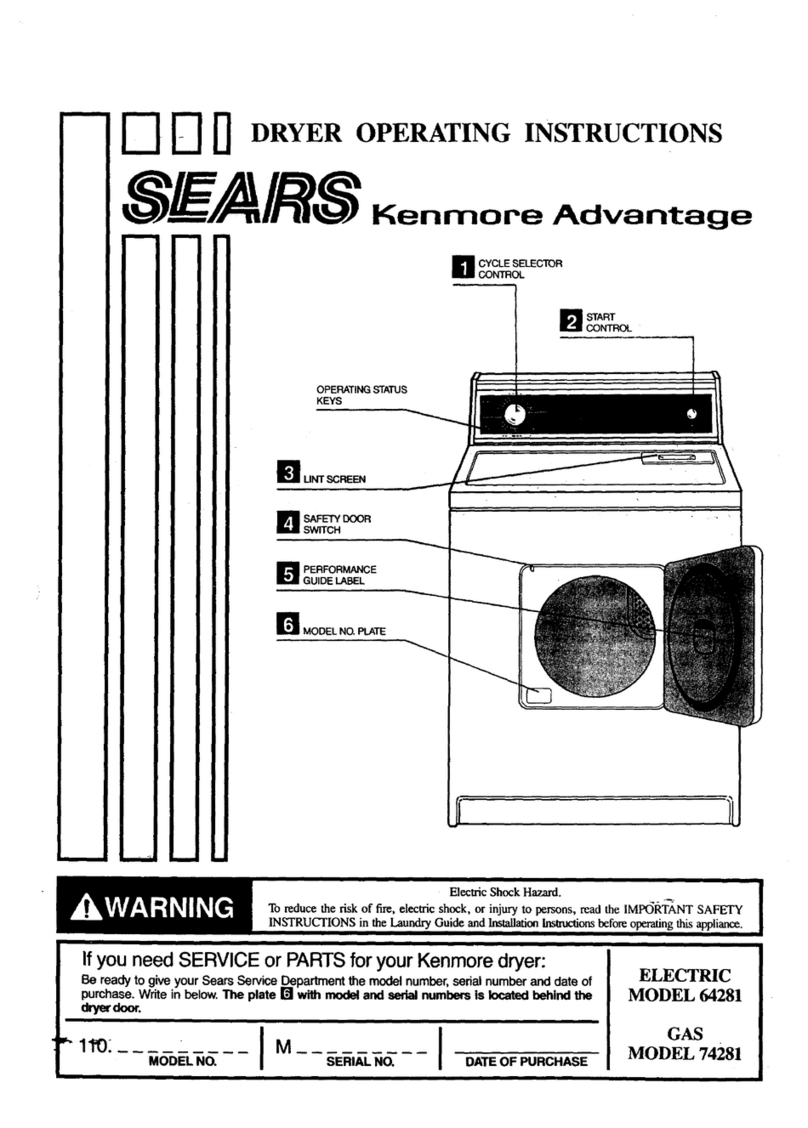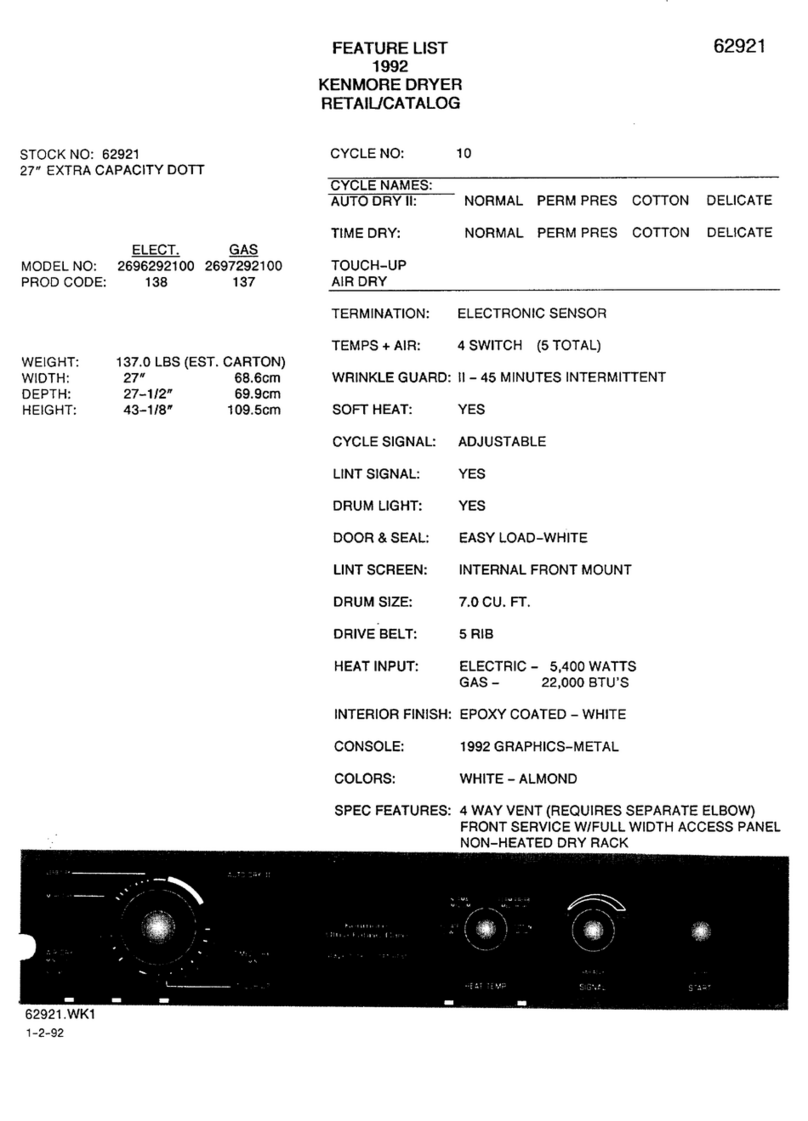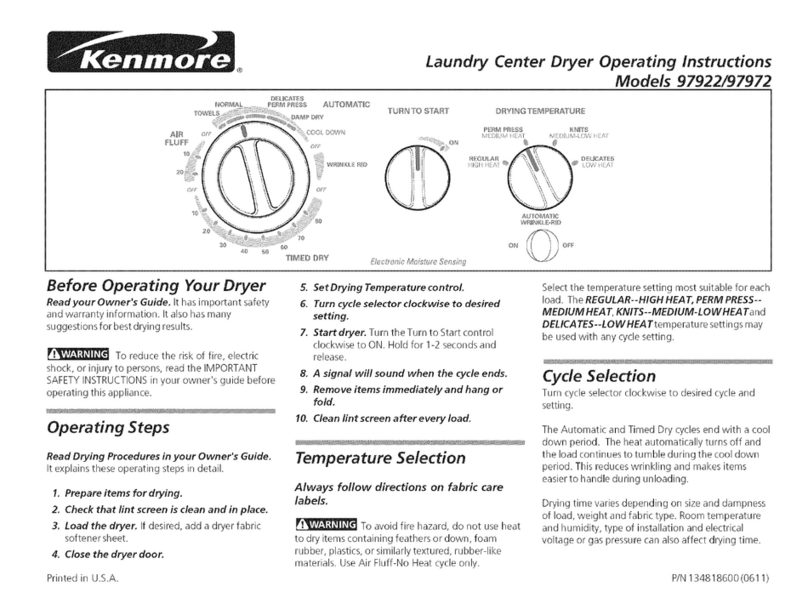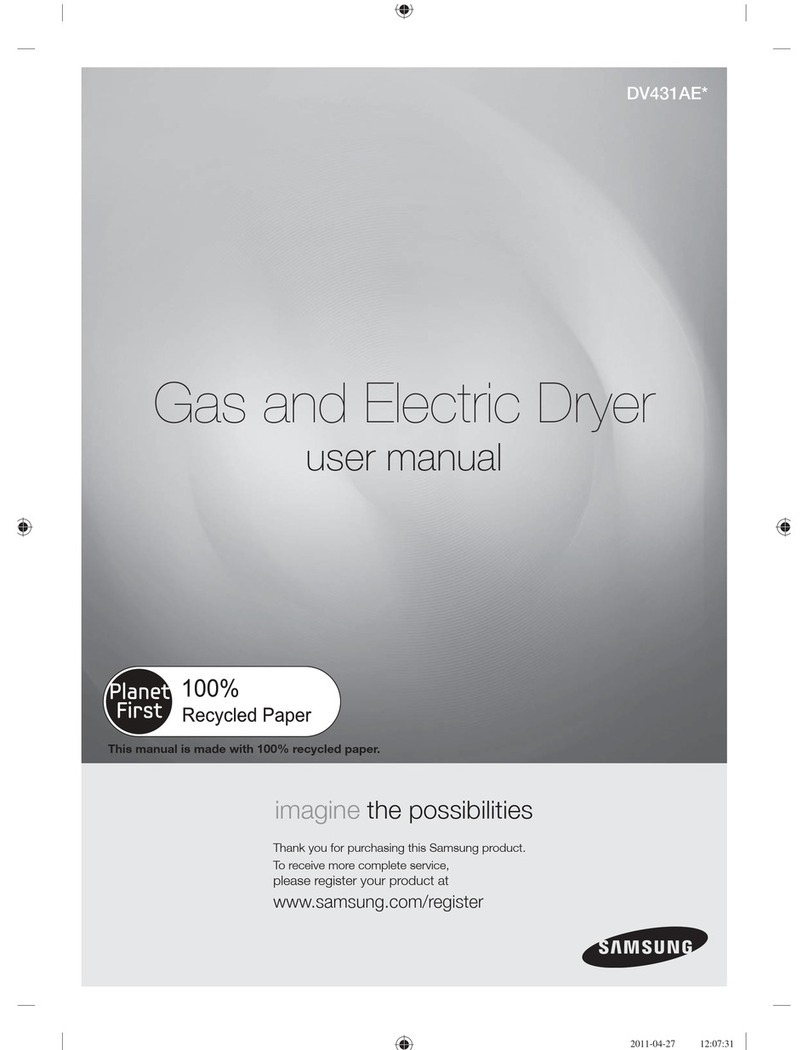
2
POWER SUPPLY CORD - The dryer is equipped with a 120
volt3-wirepowercord.
NOTE: Do not under
any circumstances
remove grounding
prong from plug.
GASDryer
CIRCUIT - Individual 15 amp. branch circuit fused with a 15
amp. maximum time delay fuse or circuit breaker.
POWER SUPPLY - 3 wire, 120 volt single phase, 60 Hz,
AlternatingCurrent.
OUTLET
RECEPTACLE
(COPPER)
3 WIRE GROUNDED NEUTRAL
120-240 VOLT 60 CYCLE
MAIN FUSE BOX
30 AMP DELAYED ACTION
FUSES
OR CIRCUIT BREAKER
NEUTRAL WIRE
NEMA 10-30R (COPPER)
SUBJECT TO LOCAL
REGULATIONS
POWER SUPPLY
GROUNDING PRONG
EXHAUST SYSTEM REQUIREMENTS
Useonly4inch(10.2cm) diameter (minimum) rigid or flexible
metal duct and approved vent hood which has a swing-out
damper(s)thatopenwhenthedryeris in operation. When the
dryerstops,thedampersautomaticallyclosetopreventdrafts
and the entrance of insects and rodents.To avoid restricting
theoutlet,maintainaminimumof12inches(30.5cm)clearance
betweentheventhoodandthegroundoranyotherobstruction.
The following are specific requirements
for proper and safe operation of your dryer. Failure to
follow these instructions can create excessive drying
times and fire hazards.
Do not use plastic flexible duct to exhaust the dryer.
Excessivelint can build upinside exhaust system andcreate
afirehazardandrestrictairflow.Restrictedairflowwillincrease
dryertimes. If yourpresent system is madeup of plasticduct
or metal foil duct, replace it with a rigid or flexible metal duct.
Ensurethe present ductisfree ofanylint priortoinstalling
dryer duct.
If the dryer is not exhausted outdoors, some fine lint will
be expelled into the laundry area. An accumulation of lint in
any area of the building can create a health and fire hazard.
The dryer exhaust system MUST be exhausted to the
outside of the building!
Donotallowcombustiblematerials(forexample:clothing,
draperies/curtains, paper) to come in contact with exhaust
system. The dryer MUST NOT beexhausted into a chimney,
a wall, a ceiling, or any concealed space of a building which
can accumulate lint, resulting in a fire hazard.
Exceeding the length of duct pipe or number of elbows
allowed in the "MAXIMUM LENGTH" charts can cause an
accumulation of lint in the exhaust system. Plugging the
system could create a fire hazard, as well as increase drying
times.
Do not screen the exhaust ends of the vent system, nor
use any screws or rivets to assemble the exhaust system.
Lintcanbecomecaughtinthescreen,onthescrewsorrivets,
clogging the duct work and creating a fire hazard as well as
increasingdryingtimes.Useanapprovedventhoodtoterminate
the duct outdoors, and seal all joints with duct tape.All male
ductpipefittingsMUST beinstalled downstream with the flow
ofair.
PRE-INSTALLATION REQUIREMENTS
Tools and Materials Required for Installation:
1. Phillipshead screwdriver.
2. Channel-lockadjustablepliers.
3. Carpenter'slevel.
4. Flatorstraightbladescrewdriver.
5. Duct tape.
6. Rigid or flexible metal 4 inch (10.2 cm) duct.
7. Vent hood.
8. Pipethread sealer(Gas).
9. Plastic knife.
ELECTRICAL REQUIREMENTS
ELECTRICDryer
CIRCUIT-Individual 30amp.branchcircuitfusedwith30amp.
minimum time delay fuses or circuit breakers.
POWER SUPPLY - 3 wire, 240 volt, single phase, 60 Hz,
AlternatingCurrent.
POWER SUPPLY CORD KIT -The dryerMUST employ a 3-
conductor power supply cord NEMA 10-30 type SRDT rated
at240 voltAC minimum, 30 amp., with 3open end spadelug
connectorswithupturnedendsorclosedloopconnectorsand
marked for use with clothes dryers, OR a4-conductor power
supplycordNEMA14-30type SRDT or ST(asrequired)rated
at240 voltAC minimum, 30 amp., with 4open end spadelug
connectorswithupturnedendsorclosedloopconnectorsand
marked for use with clothes dryers. See ELECTRICAL
CONNECTIONSFORA4-WIRE SYSTEM.
OUTLETRECEPTACLE-NEMA10-30R or14-30Rreceptacle
to be located so the power supply cord is accessible when
the dryer is in the installed position.
Typical 3-wire installation
Explosion hazard. Do not install the dryer
wheregasoline or other flammablesare kept or stored.Ifthe
dryer is installed in a garage, it must be a minimum of 18
inches
